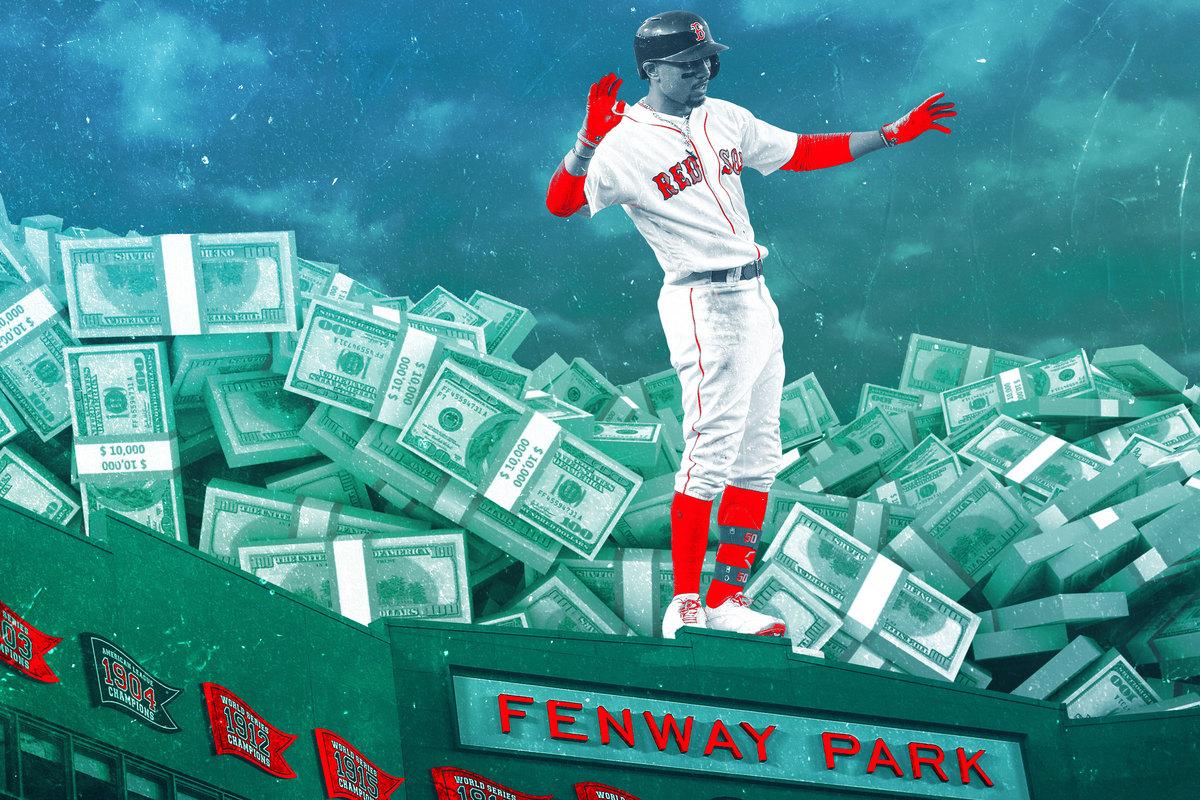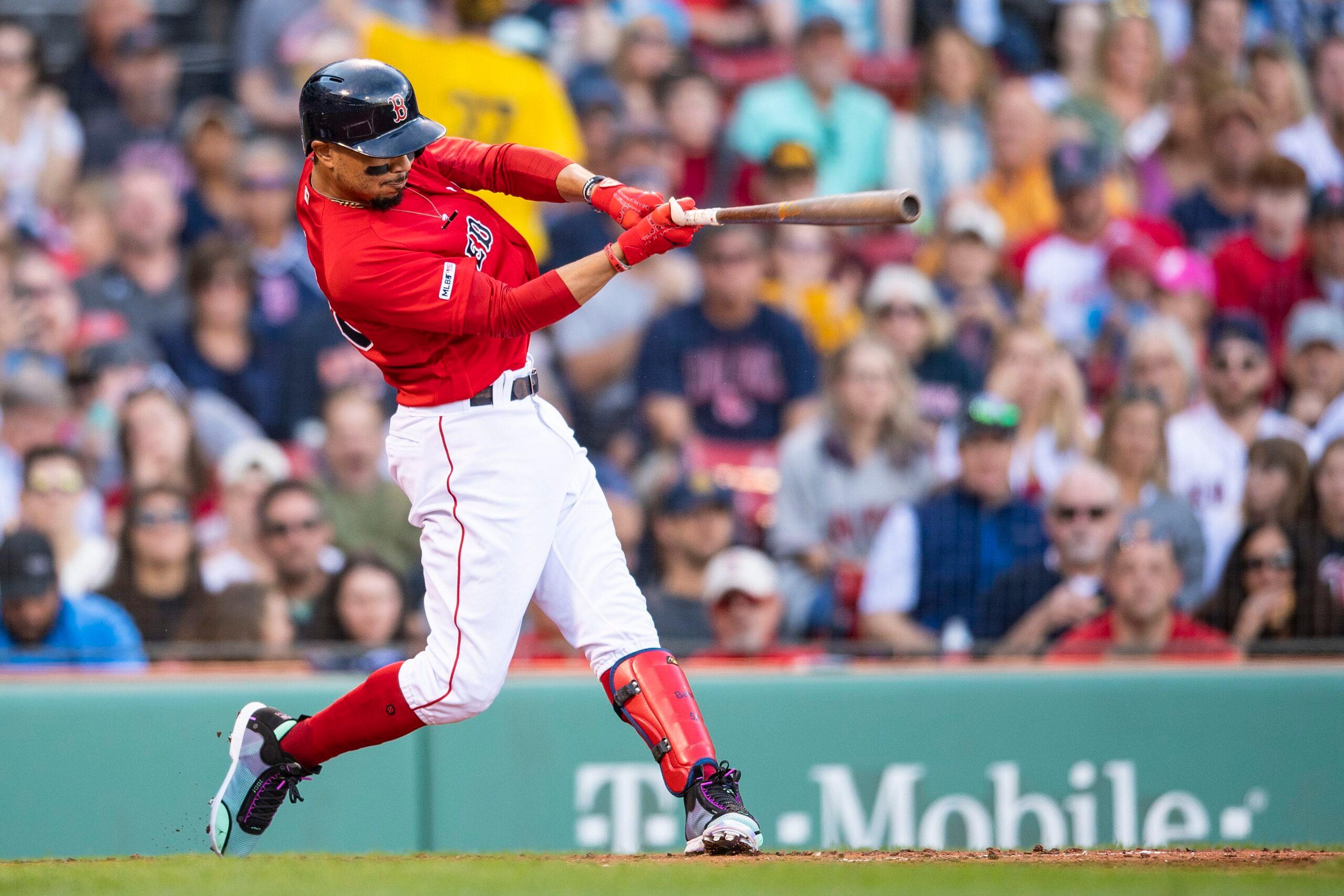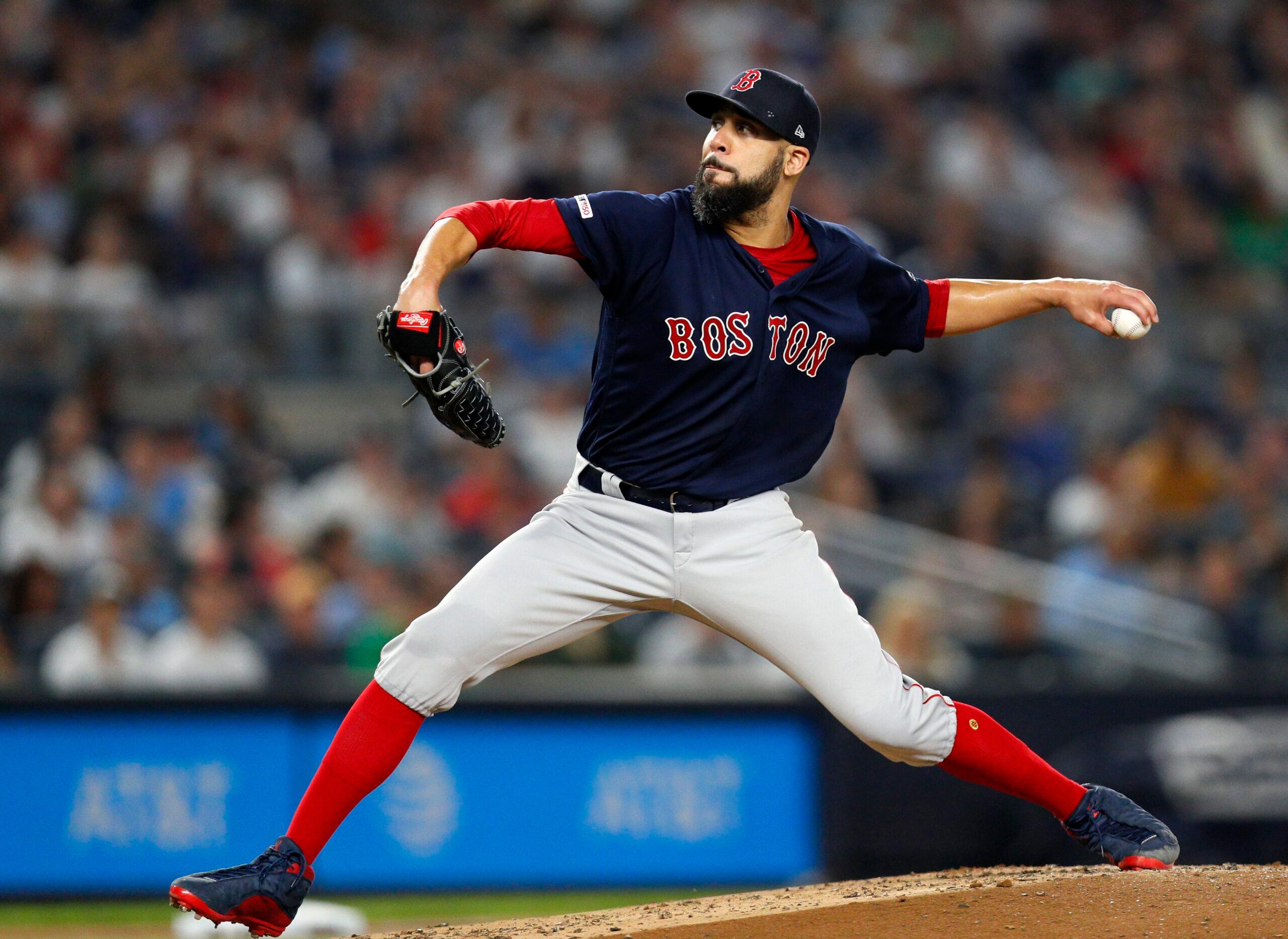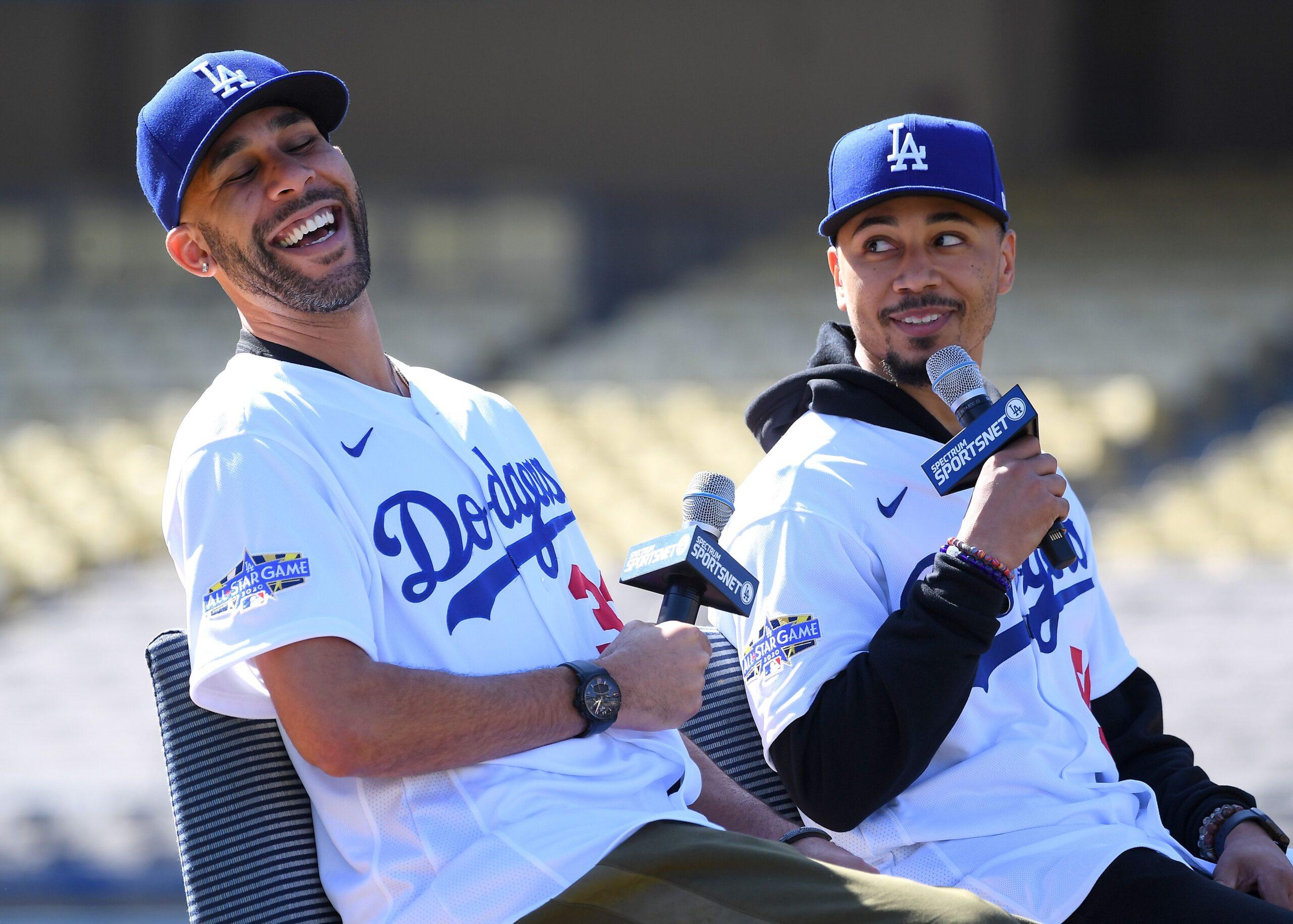
When a baseball team trades its best player, it had better have a good reason. When that player is not only talented but a recent MVP, not only beloved but a homegrown hero, not only productive but, in fact, the most productive young player ever to be traded in MLB history, that reason had better be unimpeachable.
The Red Sox have tried to explain themselves both before and after trading Mookie Betts, a 27-year-old super-duper-star, and the Red Sox have failed. After some delays and tweaks due to uncertain medical info, the momentous trade was finalized earlier this week: Betts, pitcher David Price (a fine player in his own right), and half of Price’s salary to the Dodgers in exchange for young outfielder Alex Verdugo and two prospects.
The Dodgers added the second-best player in baseball, behind only crosstown outfielder Mike Trout. The Red Sox added payroll flexibility.
But that imbalance hasn’t prevented a week of attempted justification for Boston’s decision, or even outright praise. “Boston did really well,” one executive told ESPN’s Buster Olney. “The Red Sox will reset fast,” said another, adding, “they’ll have money to spend in the next offseason.”
Many of these optimistic interpretations of Boston’s side of the trade are centered more in myth than reality. So as spring training begins and Betts prepares for the first non–Red Sox camp of his career, let’s tackle some of those myths and expose the rotten underbelly of Boston’s trade.
Myth No. 1: The Red Sox Weren’t Going to Compete in 2020 Anyway
Sometimes it makes sense to trade star players before they reach free agency. Staring down a lengthy rebuilding process, the Orioles sent Manny Machado to Los Angeles at the 2018 trade deadline in a sensible transaction for both sides. The Dodgers added an impending free agent for their title push; the Orioles added prospects to a system in need of replenishment.
But Boston was far from the position those Orioles occupied. Despite a disappointing 2019 season, which culminated in an 84-78 record and the firing of president of baseball operations Dave Dombrowski, the Red Sox were still poised to make a real run at a 2020 playoff spot.
First, they weren’t as mediocre as their record suggested last year. Their BaseRuns record, which looks at a team’s underlying performance to estimate its record, was 89-73; only the Reds and Tigers underperformed their actual granular level of play by more games. Meanwhile, the Yankees overperformed by nine wins, the most in the league. The Red Sox actually finished 19 games behind the Yankees in the AL East, but they could have easily been just five games back—or even ahead, if the two teams’ luck flipped.
Second, in the season immediately prior to last year’s disappointment, Boston had won 108 games and the World Series with this same core. And if the Red Sox had retained Betts and Price, they’d still have nine of their top 10 players, by FanGraphs WAR, from that 2018 title team. The only missing player would be Rick Porcello, whose luster has already faded, and that count doesn’t include Rafael Devers, who ascended to stardom last season, or Christian Vázquez, a top-five catcher in the majors in 2019.
Put all those pieces together and Boston was in an enviable, if not ironclad, position. The trade took them out of it. According to data provided by Baseball Prospectus, whose PECOTA projections were released this week, trading Price and Betts—the majors’ second-best position player in 2020 by PECOTA’s accounting—cost Boston about three projected wins, moving them out of second place in the AL East and a wild-card spot.
PECOTA now pegs Boston for 84.5 wins in 2020 and a 28.5 percent chance of reaching the playoffs. So even after the trade, they’re not out of the race before it begins—though they’ll have plenty of competition, with the Rays, Angels, Indians, Athletics, and White Sox all in the mid-80s range, and they lost Betts and Price at a place on the win curve in which every fractional advantage counts. As new chief baseball officer Chaim Bloom said at a press conference announcing the trade, “It’s reasonable to expect we’re going to be worse without” Betts and Price. Indeed!
In other words: If they had Betts, the Red Sox would look like a playoff team this preseason. Now they don’t.

Myth No. 2: Trading Betts Will Save the Red Sox Money for Years to Come
Most analyses in Boston’s favor concern the financial aspect of the deal more than the on-field effect. These are misguided as well. Baseball’s Byzantine accounting system facilitates this sort of justification because this area is such a challenge for fans and media members to understand.
So let’s examine Boston’s actual savings from the Betts trade. Most of the focus concerns the competitive balance tax, or CBT, a surcharge on top of a team’s payroll commitments if they rise above a set of escalating thresholds. (The luxury tax applies only to the overages, though—none of the hundreds of millions of dollars under the lowest CBT threshold are subject to extra taxation.) Crucially, if a team remains above the thresholds for more than one season, the taxes grow more onerous. Here’s what they look like for the 2020 season.
Competitive Balance Tax Penalties
If a team dips back under the lowest threshold even once, it resets the penalties to reenter the “first-time offender” column. Looking at the percentages, it’s easy to see why a reset is desirable. The Yankees and Dodgers did so recently, meaning their taxes this season—with Gerrit Cole’s and Betts’s contracts, respectively, pushing them into the penalty area—won’t be as high. Red Sox owner John Henry told the Boston Globe in January, “I think every team probably wants to reset at least once every three years.”
But that’s the key number: three years. Teams reach the highest level of CBT penalties if they go over the tax for three consecutive years, so if the Red Sox plan to reinvest the money they’re saving this season, they would vault back over the tax line in 2021 and return to the highest tax level in just three seasons. Thus, speculation that the Red Sox might save money for a decade or more from this one season of stinginess doesn’t pass muster.
Moreover, the collective bargaining agreement between players and owners—which details the CBT and attendant penalties—will expire after the 2021 season. Given the increasingly fraught economic state of the game, it’s possible that the entire nature of the CBT structure will change after 2021—meaning, in effect, that the duration of Boston’s savings could shrink from an already small three years to only two.

Myth No. 3: Boston Will Reinvest the Money They Save Into the Team
To be fair, this assertion might come true. Nobody knows whether Boston will actually pump the $50 million or so it’s saving this season into the 2021 and 2022 rosters. But as Rob Arthur found for BP this week, history suggests this notion is unlikely.
“When teams trim their budgets, they don’t respond by spending more later,” Arthur wrote. “It’s not even a guarantee that Boston’s budget will rebound at all. Many teams in their position continue to drop payroll.” Although the recent Yankees and Dodgers examples suggest otherwise, Arthur’s research showed that overall, even big-budget teams don’t tend to spend more after reducing their budget.
Arthur continued, “Teams may sell their fans on spending more in subsequent seasons, but the reality is that the saved money doesn’t go back into player salaries. The final destination is as added profit to the owners.”
That owner, by the way, is worth an estimated $2.7 billion, according to Forbes. Savings of, say, $10 million for him—keep that figure in mind—are the equivalent of savings of $360 for the median American family.

Myth No. 4: Henry and the Red Sox Will Save Substantial Amounts of Money by Dipping Under the Luxury Tax
Thus we arrive at the greatest myth of all.
In 2020, of course, they’ll save a lot of money, but mostly because they shed all of Betts’s $27 million and half of Price’s $32 million for the year. Subtract Verdugo’s pre-arb contract and that’s about $42 million in salary savings this year, plus about $11 million in projected luxury tax payments that will no longer arise.
The savings from resetting the luxury tax and becoming first-time rather than third-time offenders dry up quickly beyond 2020 unless the Red Sox plan to run truly exorbitant payrolls. No team under the current CBT structure has ever gone so high as to make the difference between those two rate levels really matter. When the Red Sox won the 2018 title with the sport’s highest payroll, for instance, they paid only $12 million in CBT payments—a small tradeoff for a World Series trophy, in a year in which Boston collected an estimated $516 million in revenue.
This chart shows how much Henry would save, on average across 2021 and 2022, at different levels of spending in those seasons. (For ease of analysis, for the latter season this projection assumes that the CBT system will continue as presently constructed in the new collective bargaining agreement.) If the Red Sox stay below the lowest CBT threshold, they wouldn’t save anything. If they go above, the savings would be minimal at the lower levels.
Red Sox Projected CBT Savings, 2021-22
Even with a pre-tax payroll of $250 million, which would represent the highest payroll in franchise history, Henry would save only around $10 million per year from diminished luxury tax payments. (Some other, harder-to-calculate factors might play a small additional role, like Boston’s collection of a complicated tax revenue rebate, which FanGraphs’ Craig Edwards estimates could work out to an extra $3.75 million per year. But the gist of the chart remains the same in any case.)
Beyond the tax considerations, there’s also the question of newly formed roster holes. In losing Price, Boston opened up a rotation spot that is currently being filled by, well, nobody—MLB.com’s depth chart lists only four starting pitchers for the club (a list that includes quite the dropoff from Chris Sale and Eduardo Rodríguez to Nathan Eovaldi and Martín Pérez). The remaining free agent options for 2020 are admittedly cheap but uninspiring, with the likes of Jeremy Hellickson, Collin McHugh, and 2019 Red Sox hurler Andrew Cashner topping the list, but Boston can’t rely on internal options; of their five pitching prospects on BP’s top-10 team list this winter, two project as relievers, two more haven’t pitched above A-ball, and top pitching prospect Noah Song will spend the next two years in the Navy before he can return to the organization.
If they want to contend this year or in 2021 or 2022, they’ll need to immediately eat into some of those savings to replenish the rotation, or risk falling even further behind in the standings. This prospect is made more difficult by the Betts trade, because by paying $16 million per year to the Dodgers to cover half of Price’s salary, they limit the effective payroll they can spend on the actual Red Sox roster—unless they’re planning to pay more on payroll than they would have had they kept Price, which doesn’t make sense because then their tax burden would increase.
Going the cheaper route doesn’t make much sense either, though—this is the Red Sox, one of the sport’s premier and richest franchises, and they should always be in contention. Except they need a pitcher now to get there, and Price, ironically, would help fill that hole.
And the savings from trading him and Betts, again, aren’t even that large in the first place, relative to a typical Boston payroll. For context for that chart, when the Red Sox won the championship in 2018, they paid Hanley Ramírez and Pablo Sandoval a combined $40.8 million despite cutting them in May and during the previous season, respectively, and that extra cost didn’t get in their way. Even if the Red Sox run an unprecedented $300 million payroll the next two seasons, Henry would ultimately save just half the amount of money that he gave Ramírez and Sandoval to not play in 2018.
A splurge to $300 million likely will not occur, though. The club’s actions this winter all point toward future frugality rather than exorbitance—even beyond trading its best player, Boston also barely dipped a toe into the free agent pool. And in general, no team is approaching payrolls of the sort that would actually threaten Henry’s pocket book.
Aside from extending current young players like Devers—which might only reinforce the disappointment around Betts, whom Boston failed to extend—it’s hard to envision how Boston will reinvest all of its 2020 savings given next winter’s possible targets. Many of the top potential free agents have already signed extensions that will keep them off the market: Mike Trout, Jacob deGrom, Paul Goldschmidt. George Springer could prove enticing, or a breakout pitcher from the Marcus Stroman–Robbie Ray–Trevor Bauer group. But none of those players will be worth the kind of colossal contract that could incur luxury tax shockwaves.
Only one impending free agent, in fact, could command such a deal. That player, of course, is Mookie Betts. And it’s clear that Boston doesn’t want to pay him what he’s worth.

